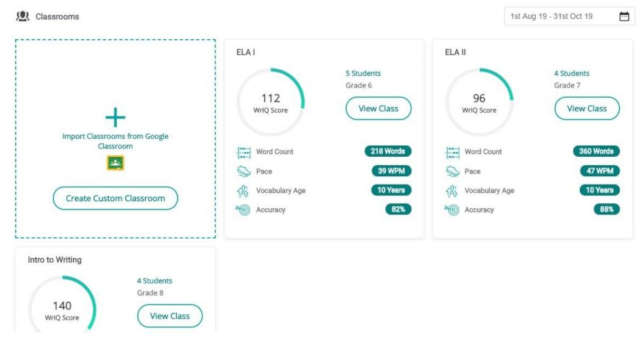Student Writing Program WriQ Speeds Grading-Feedback Cycle
- By Dian Schaffhauser
- 10/19/20
Education technology company Texthelp has released a new online program to
help students improve their writing. WriQ
automates and standardizes the assessment of student writing against
national norms, evaluating each student's writing across multiple
criteria. The idea is to help teachers assess writing proficiency
more efficiently and give students more personalized feedback.
WriQ
provides "positive nudge" notifications and digital
achievement badges each time students write more. A student dashboard
displays real-time feedback, allowing them to choose to refine their
writing without waiting for teacher guidance.
The
algorithm that powers the software, named WriQ Score, was developed
using data from more than 85,000 teacher-graded documents.
The
program was released in beta form in 2019. Now it's available as a
free extension through Google
Docs
or as an add-in for Microsoft Word to teachers and students. A paid
version offers additional features, such as a full assessment
dashboard and comparisons of writing against national norms.

According
to the company, WriQ can be used across grade levels, from fourth
grade through graduate programs, and across core subjects. The paid
version of the program for a "defined group" is $10 per
student in K-12; a district-wide license is currently $1 per student.
One
beta tester said the program cut down the editing and correction time
for teachers. According to Sally Garza, teacher and technology
director at Ohio's Lawrence
School,
said the use of the software "leaves me more time for
differentiation and 1-to-1 instruction, and I have real data to share
with students and parents. Having the data is more persuasive than
just a subjective opinion from the teacher.
"The
COVID-19 pandemic has called attention to a number of new and
long-standing challenges around student motivation and learning loss,
as well as the demanding workloads facing our teachers each and every
day," said Martin McKay, Texthelp's founder and CEO, in a press
release. "WriQ, has been designed with those needs in mind. Not
only does it standardize writing assessment in order to give teachers
more time to focus on student instruction and support, but it is also
designed to motivate and engage students in writing."
About the Author
Dian Schaffhauser is a former senior contributing editor for 1105 Media's education publications THE Journal, Campus Technology and Spaces4Learning.